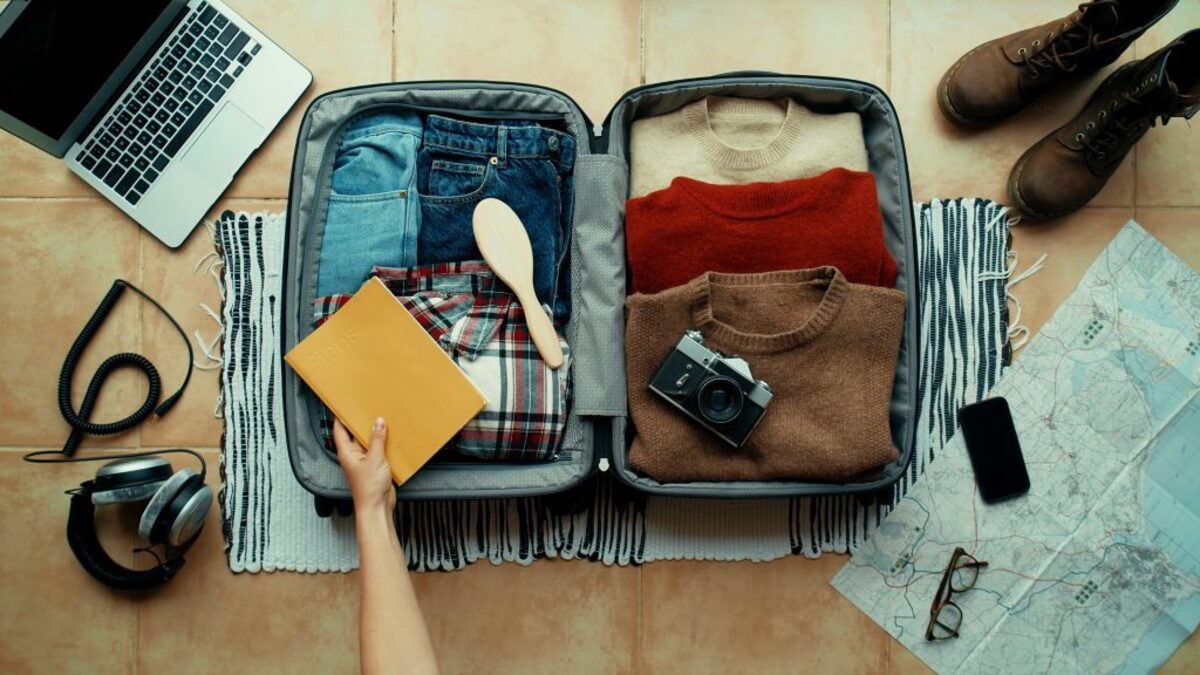
Finding the Balance Between Packing Light and Being Prepared
Traveling with a lighter bag offers a sense of freedom, making moving through airports, train stations, and city streets much easier. However, the challenge lies in ensuring that you have everything you need without overpacking. Many travelers fear leaving behind important items, but strategic packing can help you bring all the essentials without unnecessary bulk.
Minimizing luggage doesn’t mean compromising on comfort or convenience. By choosing the right clothing, toiletries, and travel gear, you can maintain a well-rounded packing list while reducing weight. Understanding the key principles of packing light helps travelers streamline their packing process, making trips smoother and stress-free.
This guide explores practical techniques for packing efficiently while ensuring that you have all the necessities. From selecting versatile clothing to optimizing luggage space, these strategies will help you pack smartly without feeling unprepared.
Choosing Versatile Clothing for Maximum Efficiency
One of the easiest ways to pack light is by selecting clothing that serves multiple purposes. Instead of packing separate outfits for every day, focus on mix-and-match pieces that allow for various combinations. Neutral colors, classic cuts, and lightweight fabrics make it easy to create different looks without overloading your suitcase.
Layering also plays a crucial role in keeping your luggage minimal. Rather than carrying bulky sweaters or jackets, opt for layers that can be adjusted based on the temperature. A lightweight jacket, a few breathable shirts, and a pair of comfortable pants can cover multiple weather conditions without taking up excessive space.
Footwear is another factor that adds weight to your bag. Packing one pair of comfortable walking shoes and a versatile pair of dressier shoes ensures you’re prepared for various occasions without carrying unnecessary extras. Limiting yourself to two pairs of shoes prevents bulk while keeping your wardrobe functional.
Streamlining Toiletries Without Skipping Necessities
Toiletries can quickly take up space, especially with full-sized bottles and unnecessary extras. Opting for travel-sized products or reusable containers helps minimize weight while ensuring you have all your daily essentials. Many hotels and accommodations provide basic toiletries, so bringing only the items you can’t do without saves space.
Multipurpose items also help cut down on unnecessary bulk. A simple bar of all-purpose soap can be used for washing hair, body, and even clothes. A tinted moisturizer with Sun Protection Factor (SPF) eliminates the need for separate foundation, sunscreen, and lotion. These small adjustments free up valuable space in your luggage.
For those who prefer their own hair and skincare products, silicone travel bottles allow for easy refills without carrying excess product. Packing solid toiletries, such as shampoo bars or toothpaste tablets, also reduces the need for liquids while being environmentally friendly.
Organizing Your Bag for Optimal Space Utilization
How you arrange your luggage can make a significant difference in how much you can fit. Rolling clothes instead of folding them not only saves space but also prevents wrinkles. Compression packing cubes further maximize space while keeping items organized, making it easier to find what you need without digging through your entire bag.
Separating different categories of items into designated compartments also improves efficiency. Keeping clothing, toiletries, and electronics in separate sections allows for quicker access and prevents items from shifting during travel. A well-organized bag means less time spent unpacking and repacking, making your trip smoother.
Placing heavier items at the bottom of your bag distributes weight evenly, making your luggage easier to carry. If you’re using a backpack, positioning heavier items close to your back prevents strain while keeping your posture balanced.
Selecting Lightweight Luggage That Works for You
The right bag can make all the difference in packing light. Opting for a lightweight suitcase or travel backpack ensures that your bag itself doesn’t add unnecessary weight. Many modern travel bags feature expandable compartments and built-in organizers, making packing even more efficient.
Soft-sided luggage often provides more flexibility for fitting items, while hard-shell cases offer added protection for fragile belongings. Depending on your travel needs, a well-designed backpack or rolling suitcase can significantly improve mobility while keeping packing minimal.
For shorter trips, a carry-on suitcase eliminates the need for checked baggage fees while allowing for a streamlined travel experience. Many airlines enforce strict weight limits for carry-ons, making lightweight luggage an even more valuable asset.
Managing Electronics and Travel Gadgets Wisely
Technology plays an essential role in travel, but carrying too many devices can quickly add bulk to your luggage. Choosing multi-functional gadgets, such as a smartphone that replaces a camera, GPS, and entertainment device, minimizes the number of electronics needed.
Carrying a universal adapter ensures compatibility with various plug types while preventing the need for multiple chargers. A lightweight power bank is another valuable item for keeping devices charged without relying on airport outlets or hotel sockets.
If a laptop is necessary, selecting an ultralight model rather than a bulky traditional laptop reduces weight without sacrificing productivity. Tablets or e-readers can also serve as alternatives for reading, watching movies, or even getting work done while traveling.
Packing Smart for Different Climates and Destinations
Packing efficiently depends on the destination and expected weather conditions. Warm climates allow for lighter clothing, whereas colder destinations require strategic layering. Checking weather forecasts before packing ensures that you bring the right clothing without overpacking unnecessary items.
For beach vacations, lightweight fabrics, quick-drying materials, and compact swimwear help reduce space. A sarong or large scarf serves multiple purposes, acting as a beach cover-up, a makeshift blanket, or even a towel.
For colder destinations, wearing heavier items like jackets and boots on the plane frees up luggage space. Thermal layers take up less room than bulky sweaters while still providing warmth. Planning outfits based on expected conditions prevents unnecessary bulk in your bag.
Minimizing Miscellaneous Items That Add Up
Small, non-essential items can quickly accumulate and weigh down your luggage. Limiting accessories, jewelry, and unnecessary extras ensures that your bag remains lightweight while keeping packing practical.
Bringing a compact, reusable shopping bag serves multiple purposes, from carrying souvenirs to acting as an extra storage option if needed. A collapsible water bottle helps reduce single-use plastic waste while saving space in your carry-on.
Instead of carrying multiple books, downloading e-books or audiobooks reduces weight while still providing entertainment. Planning ahead and eliminating unnecessary items creates a more efficient packing process, ensuring that every item in your bag has a purpose.
Creating a Packing Checklist for Stress-Free Travel
A well-thought-out packing checklist ensures that you bring only what you truly need. Before packing, laying out items and reviewing their necessity prevents last-minute overpacking. Revising your checklist based on past trips helps refine packing habits over time.
Dividing the list into essentials such as clothing, toiletries, and electronics simplifies the packing process. Prioritizing must-have items while eliminating redundant belongings leads to a more efficient travel experience.
By following a checklist, travelers can pack confidently without second-guessing their choices. Over time, packing light becomes second nature, making future trips more enjoyable and hassle-free.
Traveling Light Without Compromising Comfort
Packing light doesn’t mean leaving behind essentials or feeling unprepared. With smart packing strategies, travelers can bring everything they need while maintaining a minimalist approach. Selecting versatile clothing, streamlining toiletries, and optimizing luggage organization create a stress-free travel experience.
Choosing the right bag, managing electronics wisely, and packing according to destination needs further simplifies the process. By eliminating unnecessary weight and making intentional choices, travelers can enjoy smoother, more enjoyable trips.
The art of packing light takes practice, but with the right approach, it becomes a valuable skill that enhances every journey. Whether for business or leisure, these strategies ensure that you can travel efficiently without sacrificing comfort or convenience.







